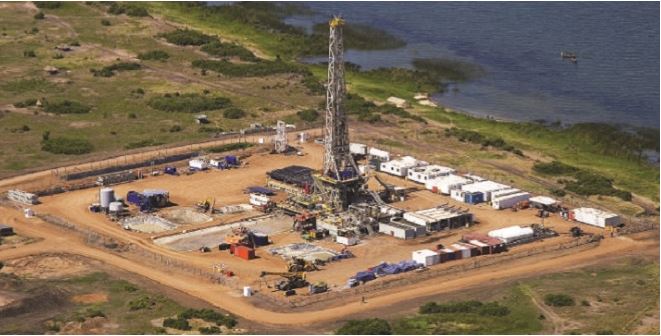Uganda is now transiting from the exploration phase to the development phase of its oilfields. With about three projects coming up, the country expects to develop those of its oilfields where it has some discoveries.
It also expects to have a 60,000 barrels refinery and 200,000 barrels export crude oil pipeline from Uganda to Tanzania.
Uganda has about 21 oil and gas discoveries, 6 billion barrels of oil in place, 1.4 billion barrels of recoverable resources, 500 Bcf of gas, 9 production licenses, over 14 discoveries to CNOOC, Total and Tullow, 3 exploration licenses to Armour Energy and Oranto Petroleum, and 90 per cent of the Albertine Graben is unlicensed.
“We are now transiting from the exploration phase to the development phase and we have about three projects coming up as we expect to develop those oilfields where we have some discoveries.
“We expect to have a 60,000 barrels refinery. We also expect to have a 200,000 barrels export crude oil pipeline from Uganda to Tanzania. And we also have new licenses that are in exploration,” said Mr James Musherure Rujoki, a Senior National Content Officer in charge of Contracts at the Petroleum Authority of Uganda.
National Content or Local Content has been the focus of the Petroleum Authority of Uganda. In 2018, the country developed National Content Policy known as the ‘National Oil and Gas Policy’ with two major objectives.
In the country’s National Content Policy, there are about two laws which include The Petroleum (Exploration, Development and Production) Act and Petroleum (Refining, Conversion, Transmission and Midstream Storage) Act. Under these laws, there are requirements for National Content. The country also has a specific National Content requirement for Production Sharing Agreements, among others.
Uganda’s National Content is about value addition. It is also about contributions to the Ugandan economy, its citizens and enterprises. It is anchored on five key pillars, which include Technology Transfer; Employment of Ugandan citizens; Capacity Building; Use of locally produced goods and services; and Enterprise Development.
“As a result of creating our National Content, we have seen tremendous growth on value retention in the country of about 943 million dollars out of 3.5 billion dollars between 2012 – 2019.
“We have about $3.5 billion invested in Uganda’s oil and gas sector and we have retained about $943 million about 28 per cent of the investment going to the Ugandan local companies.
“We have seen tremendous growth on Ugandan Local Content. Local Content has been a top priority for the Ugandan government. But it is a gradual process and we are committed to making sure we achieve a lot on local content development in Uganda.
“We are making sure we continue developing the competitiveness of Ugandan enterprises. As a government, we have done so many things on that aspect,” said Rujoki.
He further stated, “We developed a study to identify the strengths of Ugandan companies and it is from that study that we set up a National Supplier Database covering about 1,771 entities (72% Ugandan). The Database provides detailed information about the Ugandan local companies such as their products and services, certifications, among others. The National Supplier Database is an instrumental tool as we have seen positive results from it.
“We have established an Industrial Enhancement Centre. These centres are meant to develop the local companies in areas that they are lacking behind.
“We have had various training for companies like HSE management, International Bid Management practices.
“We also realised that there are funding issues. On this note, we have put in place a specific policy to support local firms financially and the Ugandan government will be providing funds for these companies.
“We have also seen Joint Ventures partner. We have seen International and local companies collaborate to promote technology transfer. It is also part of the requirements on our National Content.”


